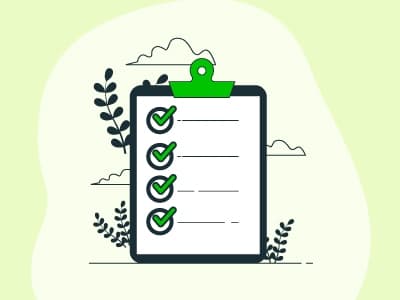Requirements gathering is a crucial process during the project initiation phase. It is a well-structured document that records all necessary resources and helps prevent confusion or delays. By investing time in gathering requirements, one ensures that the project runs smoothly. With the right template, requirements gathering becomes easy and structured. It also helps you identify and update potential changes with ease.
In this blog, I briefly explore the process, followed by three detailed templates available for free download.
Requirements gathering is where you identify the project requirements from the initial stages to project closure. It is an important step in the project management methodology that eliminates potential risks such as scope creep and budget overruns, among other things. As a key step in the project initiation phase, it ensures the project runs smoothly and minimizes disruptions throughout its timeline.
However, keep in mind that the requirements may change over the project's lifecycle. In such cases, it is important to have the document readily available. You must also make changes to the document and have either a version history or different document variations with proper information on the updates. It helps track the various updates that may have occurred during the project lifecycle, which is crucial for the project closure phase when you need to assess the project as a whole.
The requirements-gathering process is vital for assessing what needs to be built and why. It involves steps such as identifying relevant stakeholders, establishing project goals and objectives, eliciting requirements from stakeholders, documenting them, and prioritizing them based on their relevance to the overall project outcome.
The process begins with identifying all stakeholders impacted by the project and engaging with representatives from each group to understand their needs and expectations. Clear project goals and objectives, defined during the planning stage, guide the requirements gathering process. Detailed requirements are collected using techniques such as interviews, surveys, and workshops, then organized into formats like user stories and product requirement documents.
Once organized, the documented requirements are presented to stakeholders for validation, ensuring a shared understanding before procurement begins. Stakeholders then work with project teams to prioritize the requirements based on importance and feasibility, focusing on critical functionalities first to prevent any unfavorable outcomes.
Let us now explore a few templates to give you an idea of what a requirements gathering document looks like. You could start with something basic, which includes Requirement Name, Description, Category, and Notes. The templates given below are more specific and detailed.
Simple Project Requirements Template
The simple project requirements template is good for having a starting document for your gathered requirements. It is complete yet offers plenty of room for further addition and expansion based on your specifications. Customarily, it has five sections beginning with organizational information, followed by a section for document version history. The technical requirements come after that, and it has two sections for describing the technical flow and considerations – if needed.
Advanced Project Requirements Template
Advanced projects require a little more detail. This template shall help you clearly define your project scope, objectives, success measures, responsibilities, and outcomes. It also sheds light on potential risks and challenges, including limitations and assumptions. This highly structured template can be customized to your needs.
Agile Business Requirements Document Template
The provided agile business requirements gathering template is designed to capture and document the essential elements of a project. It includes sections for project overview, scope, business requirements, user stories, system requirements, acceptance criteria, risks and issues, project schedule, budget, and appendices. This template promotes a collaborative and iterative approach to requirements gathering, allowing for flexibility and adaptability throughout the project lifecycle.
Keeping the requirement-gathering process compiled in a document can be helpful. This documentation ensures that all stakeholders and team members are on the same page. It also provides a complete record of subsequent changes, ensuring the whole process is available for later review. At the time of project closure, the manager and team members may evaluate the project's progress for future improvements.
Since this blog explores requirements gathering templates, it is pertinent to understand what makes a good one. Here are the key characteristics of an effective template:
- Clear Categorization: Ensure all features and functions are categorized logically to facilitate understanding
- Alignment With Project Goals: Each requirement should support the overall project objectives to enhance relevance and focus
- Simplicity Over Complexity: While details are important, excessive complexity can confuse stakeholders. Aim for clarity and straightforwardness
By focusing on these aspects, you can create a template that is both practical and user-friendly, ultimately contributing to project success.
A well-structured requirements template serves as the foundation for a successful project. It promotes clear communication among stakeholders, aligns expectations, and reduces misunderstandings. By outlining project goals, scope, deliverables, and acceptance criteria, the template provides a roadmap for the development team, minimizing the risk of scope creep and costly rework.
Additionally, a strong requirements template facilitates effective project management by enabling progress tracking, resource allocation, and risk mitigation. By investing time in creating a comprehensive and well-thought-out requirements template, you set the stage for a successful project outcome.
Download our free requirements template today and streamline your project planning process!
